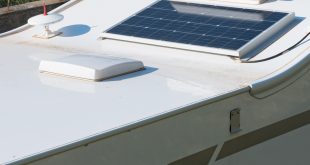You can feel the low water pressure in your home in different ways. Your bathtub may take more time to fill up, or your showerhead may not be spraying enough water to make it work as hard as you want it to.

A faulty water pipe fixture often causes this problem. When this is the case, a simple repair is all you need. However, severe problems with your water pipe will affect your entire house and require professional help.
Causes of Low Water Pressure
Below are the common reasons water pressure can drop in a given household.
- Broken Pressure Regulator
The pressure regulator controls your home’s water flow and ensures that your pipes can handle the accompanying pressure. If you think the device has been damaged somehow, you can attach a pressure gauge to check.
Turn on the home faucet and see if the water pressure reading in the gauge matches the one showing in your regulator. If not, your device is likely broken and will need to be replaced.
- Closed Meter Valve
Two main shutoff valves control the water supply to many houses. The first one technically belongs to the water company. It faces the street and connects to the city supply line. The second valve is located in the center of your home and serves as your water source. This can be either opened or closed. If your water pressure is unusually low, the second valve might not be completely open.
- Pipe Blockage
One common cause of low water pressure is a clogged pipe, but the problem could be deeper down the sewer line, especially if there is no evidence of a blockage just below your drain. In this case, a professional plumber should inspect to find the clog.
4 . Shared Pipelines
According to many plumbing companies in Colorado Springs, this is a system where water is supplied to multiple homes through one pipe. You could experience a drop in water pressure when your neighbor goes to the bathroom or washes the family car.
You can ask your water provider to install an independent pipeline for your house to get out of this situation. Although this should improve your home’s water pressure, it will cost you a lot.
- Leaky Pipes
Often, you will know that there’s something wrong with your water pressure when you suddenly find little to no water passing through your spigot. The source of the problem is likely a leaky pipe.
If you’ll do a DIY, first turn off the water supply. Then, dry the pipe before covering the crack with a rubber band that you can attach to the pipe with electric tape and a repair clamp. This won’t fix the problem permanently, but it can prevent further damage to your pipes. A lasting and more practical solution is to contact a plumber right away.
How To Deal With Low Water Pressure
Low water activity can be frustrating, but several options are available if you want to improve this. The following are worth considering:
- Get a Pressure Booster
A pressure booster is a viable solution for your home’s low water pressure. You can install the device yourself, but your pipes’ age and size will impact your work. Call a professional plumber to ensure your booster is properly installed.
- Check the Well Pump
While most homes receive water from the city’s supply line, some have deep wells dug into the ground. In this case, well issues could be the cause of water pressure problems. Pumps can help solve this problem, but they need proper maintenance to prevent early damage.
- Test the Pressure
You can use a pressure gauge to check your home’s water pressure level. You can determine if your water pressure is currently low by attaching it to a faucet.
- Ask Your Neighbors
Go around the neighbourhood and ask people if they are experiencing water pressure issues. If they are, the problem is likely with the city’s water supply system.
- Talk to a Plumber
Don’t trust anyone who says he can fix the problem with your water pressure. Some serious issues could be involved that only professional plumbers have the tools and knowledge to identify and resolve.
Key Takeaway
Various factors can cause problems with water pressure at home. While a leaking pipe is common, your pressure regulator could also be broken. This can likewise cause your water pressure to drop significantly.
Solution-wise, many are available and are quite easy to do. For example, if the cause of your water pressure problem is a leaky pipe, you can fix this on your own or by getting the services of a plumber. Nevertheless, water pressure issues are not limited to your home. It could be a community or citywide problem, which will mean reaching out to your water supplier to find out how this is being resolved.
 World inside pictures Collect and share the best ideas that make our life easier
World inside pictures Collect and share the best ideas that make our life easier








